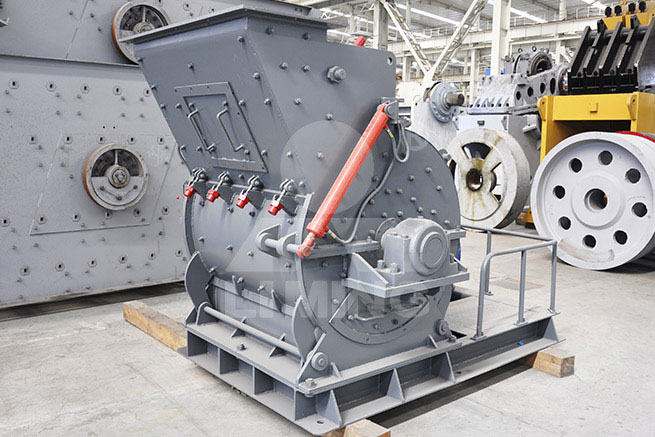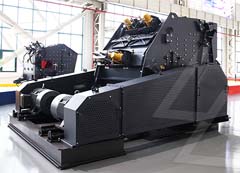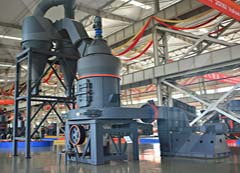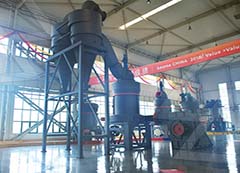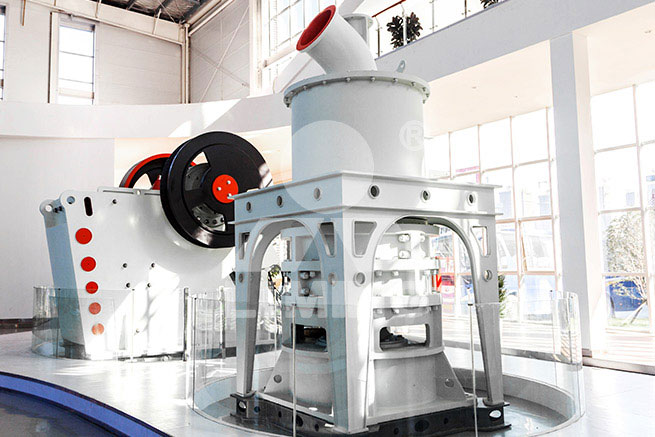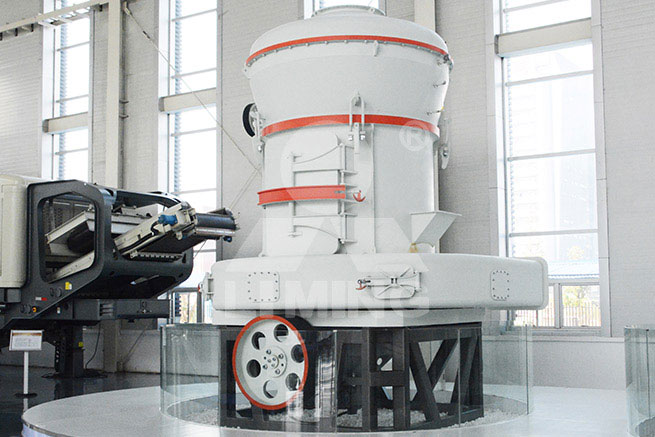up milling and down milling pdf

Stability of up-milling and down-milling, part 1 ...
2002-11-26 · 3. Up-milling and down-milling The relationship between the direction of tool rotation and feed defi nes two types of partial immersion milling operations: the up-milling and the down-milling (see Fig. 3). Both operations essentially produce the same result, but the dynamics and stability properties are not the same.
Read More

[PDF] Stability of up-milling and down-milling, part 1 ...
Abstract The dynamic stability of the milling process is investigated through a single degree of freedom mechanical model. Two alternative analytical methods are introduced, both based on finite dimensional discrete map representations of the governing time periodic delay-differential equation. Stability charts and chatter frequencies are determined for partial immersion up- and
Read More

(PDF) Stability of Up- and Down-Milling Using Chebyshev ...
2005-9-24 · The specific cutting force fo r up- and down-milling for imm ersion ratios of 0.25, 0.5, 0.75, and 1.0 are shown i n Figures 1-4 for the cases of one and four cutting teet h.
Read More

9 Main Difference Between Up Milling and Down Milling
2021-3-19 · In up milling, the direction of the cutter rotation is opposite to that of work done.Whereas in the down milling, the direction of the cutter rotation coincides with the feed direction.. In up milling, the thickness of the chip is minimum at the beginning of the cut and it reaches to maximum when the cutting ends.Whereas in the down milling, the cutting forces
Read More

UNIT 1 MILLING Milling - IGNOU
2011-5-31 · Peripheral milling is also classified on the basis of the rotational direction of cutter, as up milling and down milling. Up Milling It is also called conventional milling in this case movement of cutter teeth is opposite to the direction of feed motion. Down Milling It is also called climb milling. In this case direction of cutter motion is the
Read More

Manufacturing Processes – II
2017-8-4 · Fig. 4.3.1 Schematic views of conventional up and down milling Cutting motion Cutting motion Milling machines of various type are widely used for the following purposes using proper cutting tools called milling cutters : • Flat surface in vertical, horizontal and inclined planes • Making slots or ribs of various sections
Read More

Up Milling and Down Milling-Differences, Working ...
Up Milling Application: Generally used for milling of casting and forging. Down Milling Definition: This is also called a Climb down milling. In the case of this milling, the cutter rotates in the same direction as that of the feed. There is less friction involved between the
Read More

Vertical Milling Machine - Argonne National Laboratory
2017-3-23 · Peripheral milling uses teeth on the outer edge of the cutter body. The surface produced corresponds to the contour of the milling cutter, which can range from a flat surface to a formed shape. There are two different methods of peripheral milling, Conventional or Up Milling (Fig. 1) and Climb or Down Milling (Fig. 2). The figures on the
Read More

MILLING OPERATIONS TYPES OF MILLING MACHINES
2018-7-11 · The milling machine’s knee rides up or down the column on a rigid track. A heavy, vertical positioning screw beneath past the milling cutter. The milling machine is excellent for forming flat surfaces, cutting dovetails and keyways, forming and fluting milling cutters and reamers, cutting gears, and so forth.
Read More

Difference Between Up Milling and Down Milling -
2016-3-4 · Today we will discuss about difference between up milling and down milling. The milling is a machining process in which, a rotary cutter i used to remove the material from work piece in the direction perpendicular t the axis of rotation. The milling process is done by the machine, which hold bot the tool and work piece in jig and fixture, known as milling machine.
Read More

Stability of up-milling and down-milling, part 1 ...
2002-11-26 · 3. Up-milling and down-milling The relationship between the direction of tool rotation and feed defi nes two types of partial immersion milling operations: the up-milling and the down-milling (see Fig. 3). Both operations essentially produce the same result, but the dynamics and stability properties are not the same.
Read More

[PDF] Stability of up-milling and down-milling, part 1 ...
Abstract The dynamic stability of the milling process is investigated through a single degree of freedom mechanical model. Two alternative analytical methods are introduced, both based on finite dimensional discrete map representations of the governing time periodic delay-differential equation. Stability charts and chatter frequencies are determined for partial immersion up- and
Read More

Module 3 Selection of Manufacturing Processes
2017-8-4 · up milling In down milling, the cutting force is directed on to the work table, which allows thinner parts to be machined without susceptibility to breakage. Better surface finish is obtained in down milling but the stress load on the teeth is abrupt, which may damage the cutter.Backlash eliminator has to be used in this operation.
Read More

CONVENTIONAL MILLING VS. CLIMB MILLING
There are two distinct ways to cut materials when milling, conventional (up) milling and climb (down) milling. The difference between these two techniques is the relationship of the rotation of the cutter to the direction of feed. In conventional milling, the
Read More

Vertical Milling Machine - Argonne National Laboratory
2017-3-23 · Peripheral milling uses teeth on the outer edge of the cutter body. The surface produced corresponds to the contour of the milling cutter, which can range from a flat surface to a formed shape. There are two different methods of peripheral milling, Conventional or Up Milling (Fig. 1) and Climb or Down Milling (Fig. 2). The figures on the
Read More

Difference Between Up Milling and Down Milling -
2016-3-4 · Today we will discuss about difference between up milling and down milling. The milling is a machining process in which, a rotary cutter i used to remove the material from work piece in the direction perpendicular t the axis of rotation.
Read More

ANSWERS TO COMMON MILLING PROBLEMS
2020-8-24 · Up milling (conventional) Change to down milling (climb) Hard material Use coated tool Poor chip evacuation Reposition coolant lines, use air blasting Improper cutter helix Change to recommended helix angle Poor coolant Replace coolant or correct mixture CHIPPING Workpiece rigidity Check workpiece is secure and supported - a common issue.
Read More

Introduction to Machining: Milling Machine
2018-10-8 · other types of milling machines, shown is the vertical milling machine. • A milling machine removes metal by rotating a multi-toothed cutter that is fed into the moving workpiece. The spindle can be fed up and down with a quill feed lever on the head. • The bed can also by fed in the x, y, and z axes manually. Once an axis is
Read More

Ball Milling - University of Massachusetts Boston
2020-4-9 · ball milling 30-60 min Ar S. F. Nielsen, O. Axelsson, Synth. Commun. 2000, 30, 3501. B(OH) 2 + Br Ac KF-Al 2O 3/ Pd(OAc) 2 ball milling Ar c Franziska Schneider, Org. Proc. Res. & Develop., 2009, 13,44 Up to 96% yield Entry Rpm T (min) Yield% 1 400 10 92 2 800 5 94
Read More

Stability of up-milling and down-milling, part 2 ...
2002-11-26 · Experimental results for up-milling and for down-milling have been superimposed onto a plot of the theor-etical stability predictions in Figs. 6 and 7, respectively. Since stability boundaries for both the FEAT and the SD methods converge to the same result, as shown in the fi rst part of this paper [14], a single stability boundary is shown.
Read More

Module 3 Selection of Manufacturing Processes
2017-8-4 · up milling In down milling, the cutting force is directed on to the work table, which allows thinner parts to be machined without susceptibility to breakage. Better surface finish is obtained in down milling but the stress load on the teeth is abrupt, which may damage the cutter.Backlash eliminator has to be used in this operation.
Read More

Up-milling and down-milling wood with different grain ...
2009-3-25 · Peripheral milling with up-milling and down-milling techniques is very well known from a geometrical point of view. However, in processing anisotropic materials such as wood these geometrical aspects imply relevant differences when machining. In fact milling anisotropic materials leads to different cutting geometries when up-milling or down-milling and when
Read More

Comparsion of Machining Stability of Up and Down Milling ...
The purpose of this research is to discuss the machining stability in of the up and down milling of three milling systems: 1) the feed-direction one-dimension, 2) the normal-to-feed-direction one-dimension and 3) the symmetric two-dimension milling systems. A simplified model with time-invariant parameters is adopted to simulate the milling process.
Read More

ANSWERS TO COMMON MILLING PROBLEMS
2020-8-24 · Up milling (conventional) Change to down milling (climb) Hard material Use coated tool Poor chip evacuation Reposition coolant lines, use air blasting Improper cutter helix Change to recommended helix angle Poor coolant Replace coolant or correct mixture CHIPPING Workpiece rigidity Check workpiece is secure and supported - a common issue.
Read More

Introduction to Machining: Milling Machine
2018-10-8 · other types of milling machines, shown is the vertical milling machine. • A milling machine removes metal by rotating a multi-toothed cutter that is fed into the moving workpiece. The spindle can be fed up and down with a quill feed lever on the head. • The bed can also by fed in the x, y, and z axes manually. Once an axis is
Read More

TOP DOWN AND BOTTOM UP APPROACHES - BDU OMS
2020-10-17 · TOP-DOWN TECHNIQUES Ball milling Ball milling also known as mechanical grinding is a simple and popular method. ... Top-down and bottom-up processes of nanosized material preparation. Etching The process of removing a surface layer from a metal or plastic surface through
Read More

ANALYSIS OF SURFACE ROUGHNESS FOR END MILLING
2016-2-4 · direction, the process is called climb, or down-milling; the chip thickness will have a maximum value just after the cut is started, and will drop to zero at the end of the cut (4). Face Milling Face milling is performed by cutting edges on the periphery and the end of the cutter. The surface generated is usually at right angles to the cutter axis.
Read More

Ball Milling - University of Massachusetts Boston
2020-4-9 · ball milling 30-60 min Ar S. F. Nielsen, O. Axelsson, Synth. Commun. 2000, 30, 3501. B(OH) 2 + Br Ac KF-Al 2O 3/ Pd(OAc) 2 ball milling Ar c Franziska Schneider, Org. Proc. Res. & Develop., 2009, 13,44 Up to 96% yield Entry Rpm T (min) Yield% 1 400 10 92 2 800 5 94
Read More
- << Previous:Balancing Hammer Crusher
- >> Next:Processamento De Bre Planta


